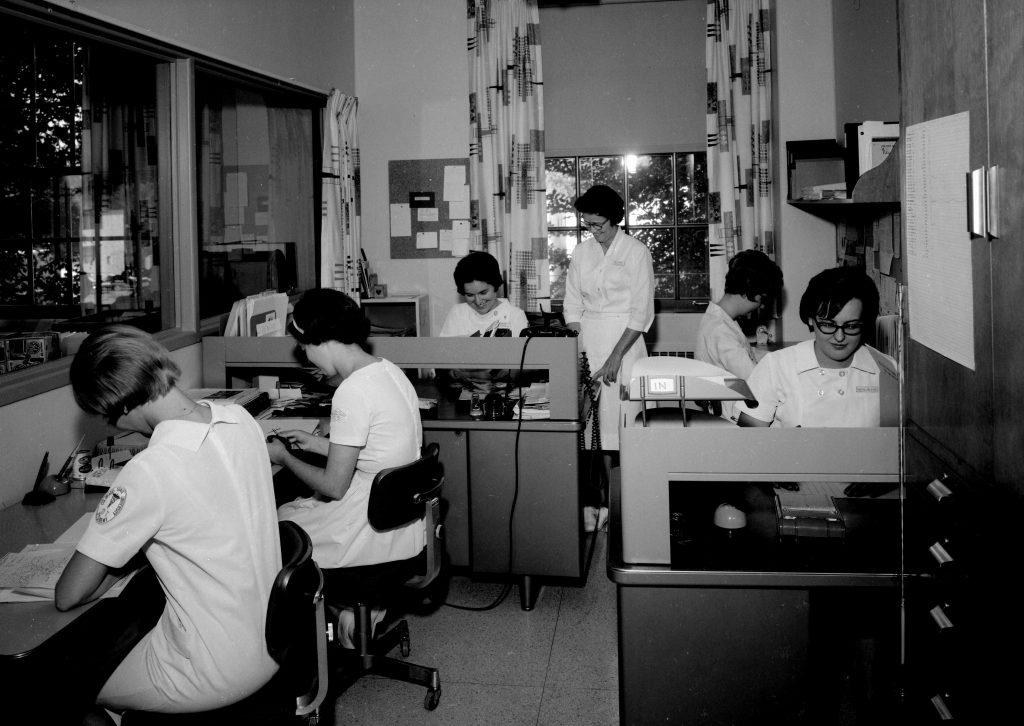-
Featured News
#FlashbackFriday 1967: Mayo Hits 1,200 Forms

This article first appeared Jan. 27, 1967, in the publication Mayovox.
This month the Section of Systems and Procedures gave the number 1200 to a Clinic form.
A number of this magnitude suggests an overwhelming mountain of paper. Obviously, no person or department makes use of all 1200 forms. However, any one of us may be using more MC numbered forms than we would guess.
A quick inventory of our desk turned up our Clinic registration envelope with form number MC-79; 2 referral cards (MC-34; MC-233); notice of monthly deposit (MC-559); a calendar (MC-977), and a weekly absence record (MC-866).
Form number 1 is the history folder which originates in Registration and remains thereafter in permanent file. It dates from about 1907 when patient registration numbers were instituted by Dr. Henry Plummer.
Forms with form numbers, principally history sheets, laboratory report forms and referral envelopes, accumulated over the years. In 1947 the newly organized Section of Systems and Procedures, headed by E. H. Schlitgus, instituted a forms control program at the request of the Clinic’s Coordinating Committee.
Its first undertaking was to inventory the forms then in use, attempt to standardize them on a physical and functional basis, eliminate duplications and effect economies in their preparation and use.
Since 1947 requests for new forms are sent to Systems and Procedures. A member of this section works with the person making the request to prepare a forms analysis sheet. This includes a short description of the form desired, size, paper specifications, color of ink, wording of text, how the form is to be used, who will use it, whether it will be filled out by typewriter, computer or hand writing, how long it is to be retained. A mock-up of the proposed form is prepared on special layout paper and a copy is sent to the Cordinating Committee for its approval.
Each form has a form (MC-888) to record its “history”: this includes number, name, date of approval, specifications, who uses it and how, where it is produced, date and quantity ordered and subsequent revisions.
One member of the section must devote approximately a third of his time to forms preparation and control, says R. W. Cleeremans, present head of Systems and Procedures. Because it is an excellent way to become acquainted with Clinic systems and members of the staff it is usually one of the first assignments given a new member of the section.
A number of considerations must be kept in balance to assure efficient and economical production and use of forms. Obviously it is cheapest to order in large quantity, unless the possibility of early revision is foreseen. Forms which become part of a history must be printed on paper which has lasting qualities.
Originally, states Cleeremans, 100 per cent rag paper was specified for all history forms. However, tests showed that a rag content of 50 per cent insured a longevity of about 200 years, considered adequate.
As a bonus we also got this bit of information: the rags that go into manufacture of the paper used for history sheets are clippings salvaged in the manufacture of Oshkosh B’Gosh overalls.
Most-used Clinic forms are x-ray referral forms and urinalysis laboratory report forms, both ordered in quantities of between 200,000 and 300,000 per year.
Forms developed at the Clinic have been adopted at many other medical institutions. Requests for permission to duplicate a Clinic form are always granted, with the provision that any reference to Mayo Clinic is deleted.
What is form 1200? It is a patient questionnaire to be used in the Section of Pediatrics.







